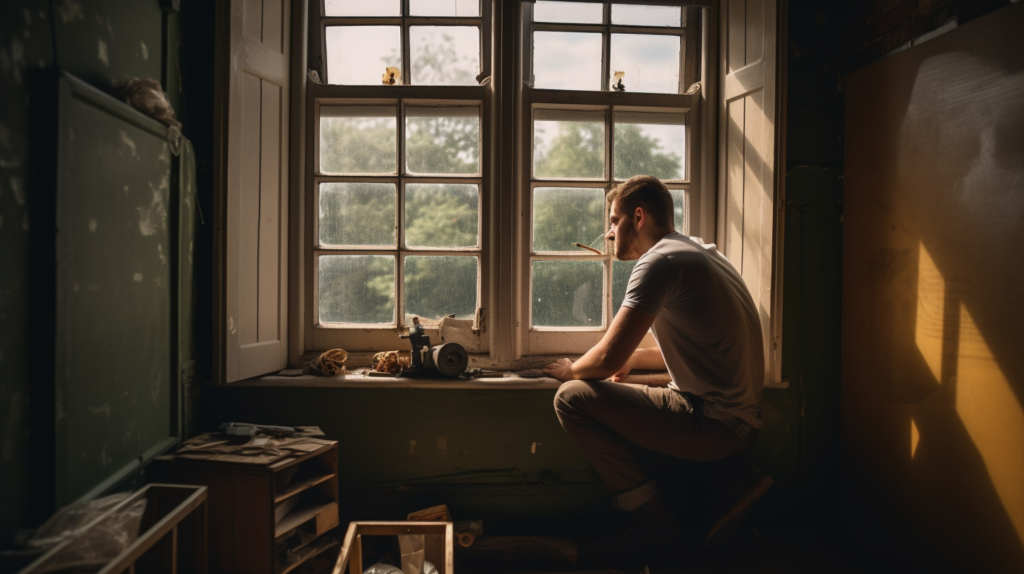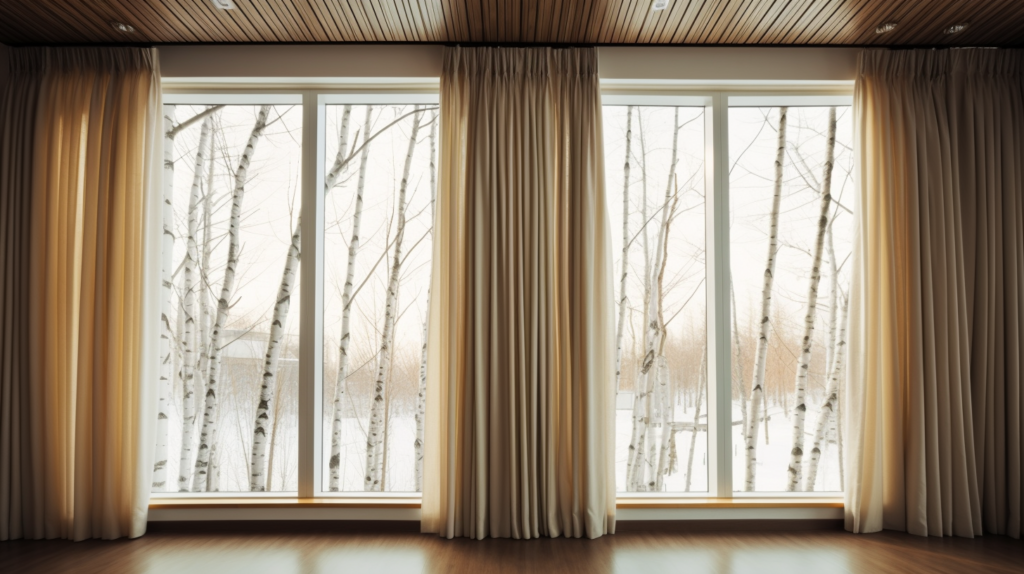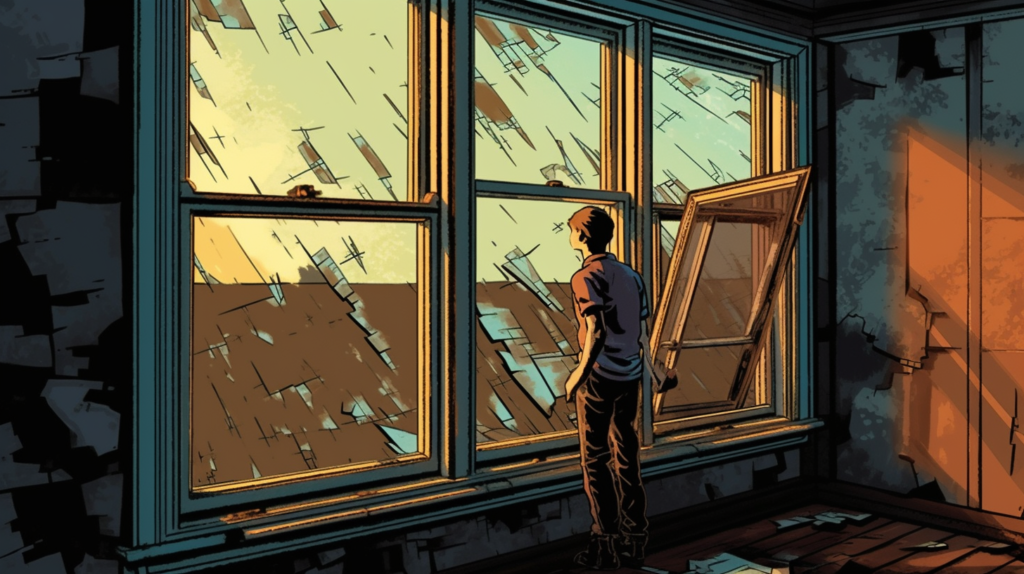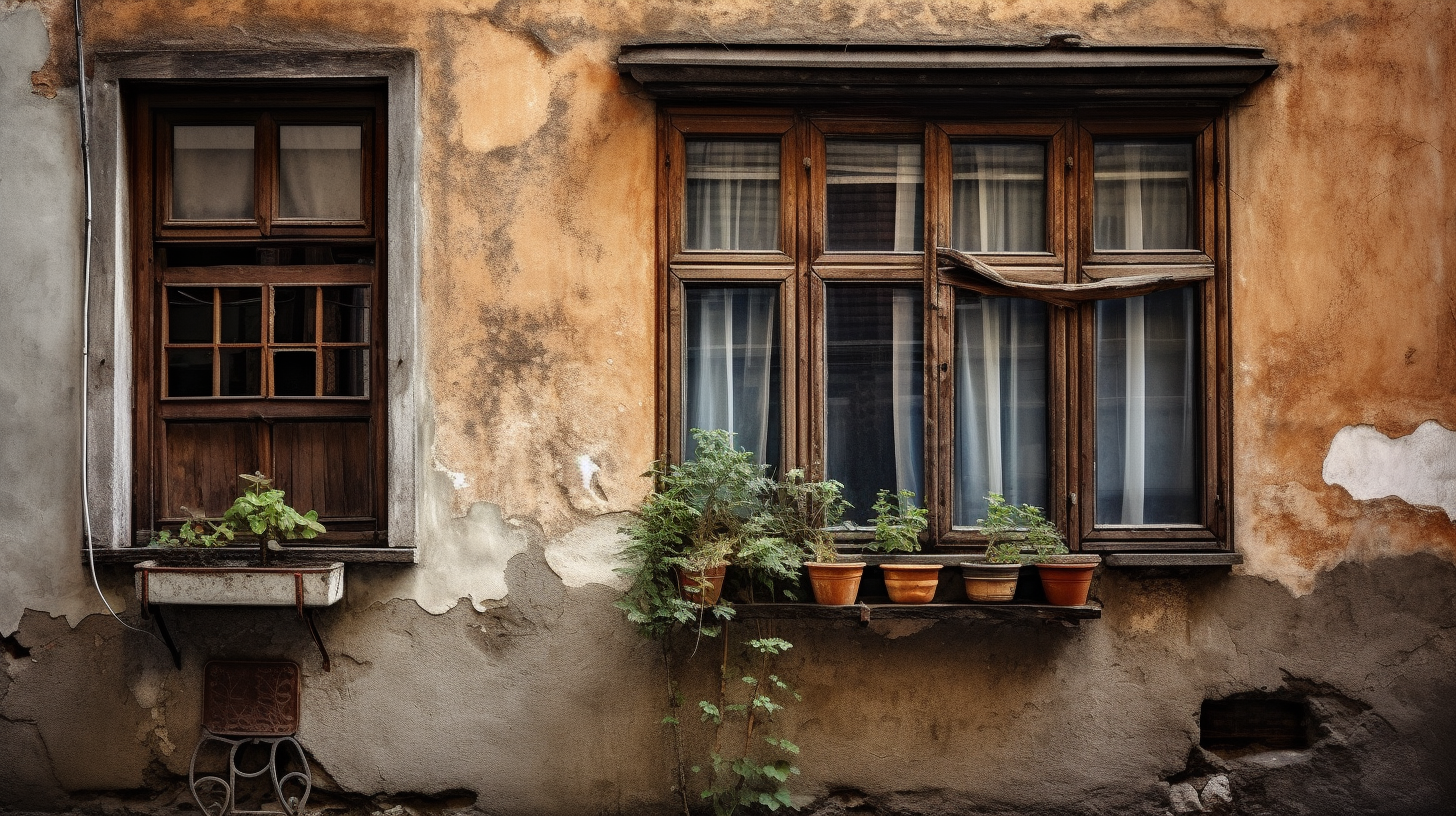If your old drafty windows make it sound like the neighbor’s garden party is happening in your living room or you hear every passing siren like it’s going through your bedroom, it’s time to take action.
Outdated single pane windows can transform your home into an acoustic nightmare, but soundproofing old windows is surprisingly doable.
With some strategic sealing techniques, noise reducing window upgrades, and a few affordably DIY sound barriers, those old windows don’t have to keep leaking noise into your space.
From inspecting window frames for leaks to sealing them thoroughly, adding soundproof window inserts to installing noise-blocking curtains, let’s dive into how you can successfully reduce noise coming through antique windows.
Step 1: Thoroughly Inspect Windows and Identify All Noise Sources

The first step when soundproofing old windows is to conduct a careful inspection of each window in the rooms you want to make quieter. Examine every window frame and glass pane for any cracks, gaps, rot or other signs that air and sound are leaking through.
Damage allowing noise intrusion often occurs around the perimeter of window frames as houses settle over time.
Look closely at the joints where separate panes meet, as well as anywhere moveable parts like sashes slide open.
Use a flashlight to spotlight trouble areas.Peer down the length of each frame to spot warping or bowing.
Tap along frames with your knuckles and listen for hollow sounds indicating voids behind the trim.
Take time to methodically scrutinize each window inside and out to locate every potential sound leak. This thorough inspection is crucial for finding all areas that need sealing in the next steps.
Deficiencies like cracked putty, broken seals between panes, and absent or degraded weatherstripping must be identified now so they can be properly repaired later.
Don’t forget to check window hardware like locks, hinges and sash cords for noise emitting wear and tear.
Next, pinpoint which windows face noise sources like busy roads, neighboring homes, construction sites, playgrounds or other loud areas.
Note windows adjacent to detached garages or workshops where power tools are used.
Make sure to mark windows that border restaurants or bars with boisterous patio dining late into the evening.
Double hung windows with one sash lowered are more prone to allowing noise intrusion.
Casement windows with worn out hardware can create openings for sound transmission at the corners when opened.
These windows allowing noise infiltration from outside your home will benefit the most from soundproofing treatments.
Focus your efforts on quieting these problem windows first before moving on to others throughout the home.
Step 2: Thoroughly Seal All Identified Air Leaks and Gaps

Once you have identified all the potential sound leakage points during inspection, it is time to seal them up. Start by cleaning the window frames thoroughly to prepare the surfaces.
Use a rag and mild detergent to wash away accumulated dirt, cobwebs, debris and grease so that sealants and weatherstripping can adhere tightly.
For painted frames with cracked or peeling spots, scrape and sand the area smooth, then spot prime and paint prior to caulking.
On wooden frames, inspect for any holes, splintering or rotting spots. Fill small defects with wood filler compound. Sand down any raised areas.
Wipe the entire frame with a dry cloth once cleaning is complete.
Apply paintable silicone caulk or rubber weatherstripping strips to seal stationary sections like fixed window frames.
Cut strips to fit each edge precisely, removing only the protective backing as you work.
Start with bottom edges, pressing the weatherstripping firmly into place by hand along the length of the frame.
Use a plastic smoother to help fully adhere the stripping and smooth out any bubbles or wrinkles.
Continue this process on both side edges and the top edge, slicing strips to size as needed. Meet the corners cleanly.
Check for any remaining gaps and apply additional weatherstripping if needed to plug them.
For movable joints like sliding sashes, use weatherstripping tape made of foam or other compressible material to allow operation after sealing.
Measure and cut strips of tape to fit the top and sides of the sash.
Remove the backing and press into place along each edge so that the tape is evenly centered between the sash and frame.
Test the sash to ensure it can still slide up and down smoothly. Add any shims or additional tape if sagging is noted.
Apply clear silicone sealant around the entire perimeter of the window frame if necessary to plug every remaining gap or crack uncovered during inspection inside and out.
Run a smooth, continuous bead and tool it into any voids with a plastic spreader to ensure a tight seal.
Remove any excess caulk with a rag before it dries.
Allow adequate drying time as indicated on the product instructions before exposing the window seals to movement or moisture.
Inspect your work and reapply caulk or weatherstripping as needed to correct any noticeable defects in the sound sealing.
Step 3: Seriously Consider Replacing Old Windows with New Soundproof Windows

If possible, seriously consider replacing very old, damaged or inferior windows with new ones engineered specifically for optimal noise reduction.
While upgrading windows can be a significant investment, it is highly effective for soundproofing and provides lasting value.
The cost can often be recouped when it comes time to sell the home. Consult local regulations regarding any restrictions on exterior modifications before pursuing replacements.
Seek out window technology incorporating multiple layers of thick tempered glass such as double or triple pane designs. The wider the glass, the lower the sound transmission.
States with noise issues like California have building code mandating a certain Sound Transmission Class (STC) rating for new constructions.
Look for something around STC 35 for impactful sound dampening through glass.
Ensure the window frames are constructed from vinyl, fiberglass or other insulating materials rather than hollow aluminum.
Operable vents should have effective compression seals like bulb or fin weatherstripping.
Work with qualified window installation contractors to determine the proper style and features for optimal noise control.
Casement or awning windows tend to offer better acoustical insulation than sliding types.
Include enhanced exterior caulking application and interior trim packaging from installation companies for increased noise blocking.
Be ready to spend more for special soundproofing upgrades like laminated layers and heavier frame construction.
This major window replacement project will require extensive planning, permits and a sizable investment, but yields the greatest sound reduction results.
Step 4: Install Effective Soundproof Window Inserts

As a more affordable alternative to full window replacement, consider adding window inserts.
These are clear acrylic or polycarbonate panels mounted inside existing window frames to create an additional sound barrier without sacrificing outward visibility or natural light.
Window inserts provide noticeable noise reduction by creating an air gap between the insert and the existing glass.
The plastic also vibrates less than glass when struck by sound waves.
Measuring window frames carefully, have inserts cut to size or purchase pre-made standard sized panels.
Match the window insert thickness to the depth of the frame for proper fit and installation.
Suction-cup mounted inserts are quick and easy for basic soundproofing in kids’ rooms or other temporary needs.
For optimal performance, choose window inserts with comprehensive frame kits that seal tightly to edges with closed cell foam, pile brushings or rubber extrusions.
Check that the kit includes enough secure mounting brackets.
Follow manufacturer instructions closely during assembly, allowing the foam tape adhesive to set fully. Test the tightness by trying to slide paper between the insert and frame.
If it easily passes through, apply additional foam tape until the perimeter is completely sealed. These well-installed window inserts prevent sound leakage and enhance noise blocking.
Step 5: Strategically Install Heavy Soundproof Curtains Over Sealed Windows

Even with all air leaks and openings plugged, some level of sound can still penetrate window glass.
An easy way to absorb noise escaping through panes is by mounting specialized curtains designed to obstruct sound waves.
Combine these curtains with your sealed windows for heightened noise reduction. Choose thick curtains made from densely woven fabrics like velvet, wool, felt or quilted blankets to effectively dampen vibrations.
The more mass a curtain has, the more sound it can absorb.
Look for noise-blocking curtains with built-in features like layered blackout lining, fiberglass padding, or heavy mass loaded plastic sheeting.
Pay attention to the curtain header at the top – wider headers allow more room for soundproofing material inside.
Measure windows carefully to allow curtains to extend several inches past the frame on all sides when mounted for full coverage.
Hang curtain rods and tracks as close to the top of the window frame as possible.
The closer the curtains sit to the glass, the better they containing noise leakage.
Invest in quality curtain hardware and pleated headings to minimize sound from rings sliding across the rod.
For doors, be sure curtains are long enough to completely cover the gap at the bottom.
Layering a soundproof window insert behind a set of acoustic curtains provides reinforcements to combat noise penetration.
Installing blackout cellular shades underneath curtains blocks any remaining pinholes where sound could sneak through.
Seal shades tightly along edges just like window inserts.
Home theaters benefit from a triple layer of soundproofing window treatments – sealed inserts, heavy curtains and light blocking shades.
Now your windows are truly fortified against sonic intrusion.
Step 6: Continue Testing and Improving Soundproofing Techniques Until Satisfactory Noise Reduction is Achieved

After thoroughly sealing, upgrading, and adding sound dampening window treatments, test the results and make careful observations.
Conduct noise checks day and night to detect variations by noise source and intensity.
Are top floor city windows still allowing too much traffic rumble and siren wail? Do ground floor suburban windows let in neighboring dog barks and lawn mower roar?
For windows facing noise generating housemates, does music or television chatter still distractingly drift into bedrooms?
Evaluate the level of noise reduction after completing recommended soundproofing steps.
If windows still allow more sound than desired for your comfort and sanity, it is likely time to layer multiple techniques for heightened effectiveness.
For stubborn noise problems, consider adding a window insert behind an existing storm window, then hanging soundproof curtains over the sealed assembly.
Remember, no single product or application alone can block all noise infiltration on aged windows.
But used together, sealants, weatherstripping, new glazing, solid inserts and heavy curtains can dramatically reduce sound transmission.
Do not be afraid to get creative by experimenting with various materials on hand to block unwanted noise intrusion through outdated windows.
Try sealing a thick acrylic sheet over the room side of windows using removable caulk beads or taping around the perimeter with painter’s tape.
Assess whether foam tiles, egg crate mattress pads or quilts applied directly to glass dull exterior noise when indoors.
Get innovative until you achieve satisfactory soundproofing results.
Just be careful not to permanently damage rental property when testing temporary noise reduction techniques.
With diligent inspection, strategic sealing techniques, upgraded windows, and layered noise blocking window treatments, those drafty old windows can be transformed into effective, peaceful sound barriers.
Give your home some tranquility by following these fundamental soundproofing methods. Say goodbye to noise infiltration and sleep better through the night with properly soundproofed windows.
Conclusion
With a careful inspection, thorough sealing of leaks, upgraded soundproof windows, effective inserts, heavy curtains and ongoing noise reduction testing, you can successfully transform those old drafty windows into peaceful sound barriers.
Employ these comprehensive yet straightforward soundproofing techniques to eliminate noise infiltration through outdated windows.
Combine window modifications with exterior white noise masking and interior acoustic wall panels for added ambient noise control throughout living spaces.
By following these fundamental methods, your home can go from sonic chaos to tranquil calm.
Give your family the gift of uninterrupted quiet and restful nights through strategic soundproofing of aged windows.
You may be surprised just how silent even old windows can become.
